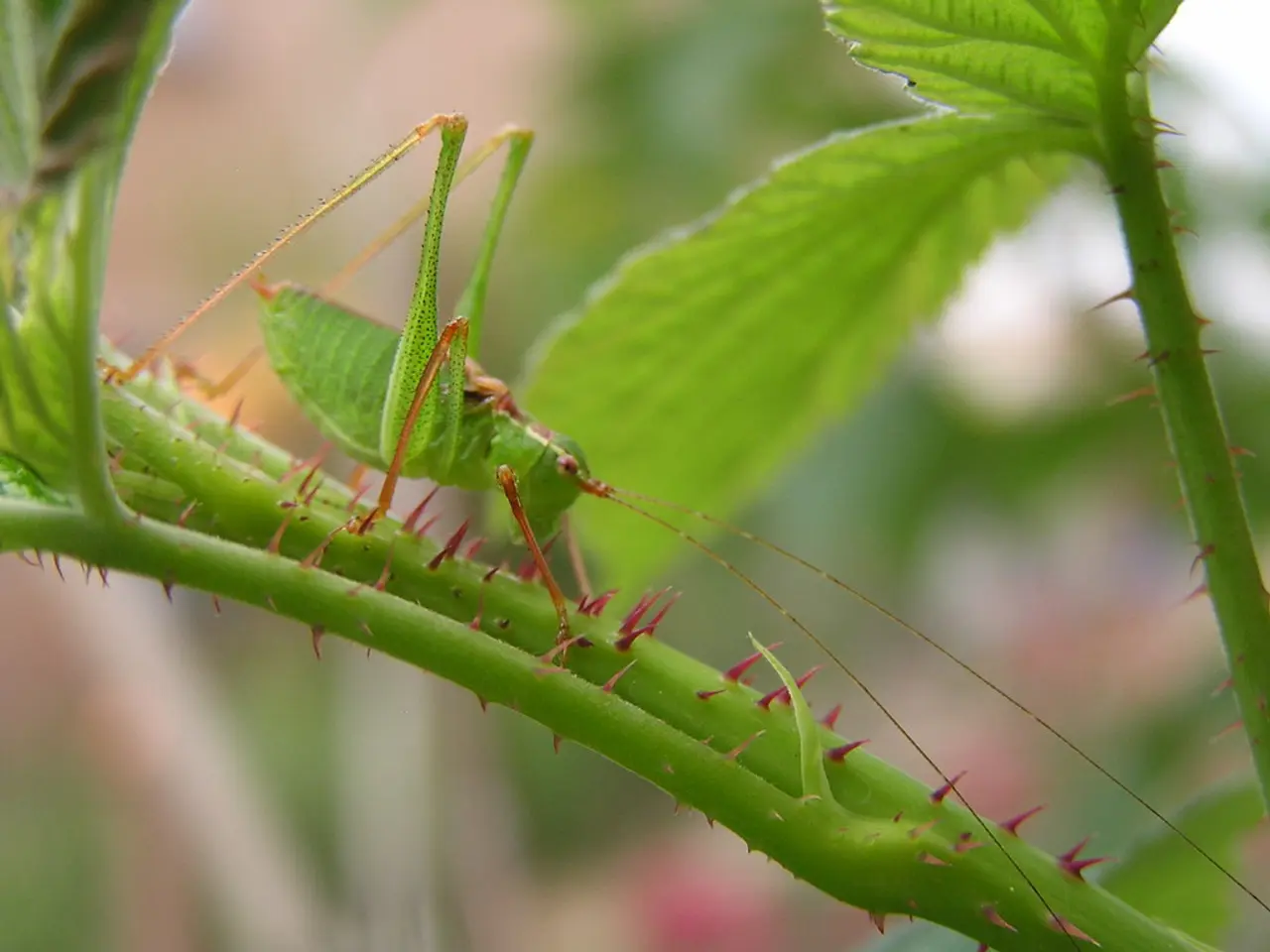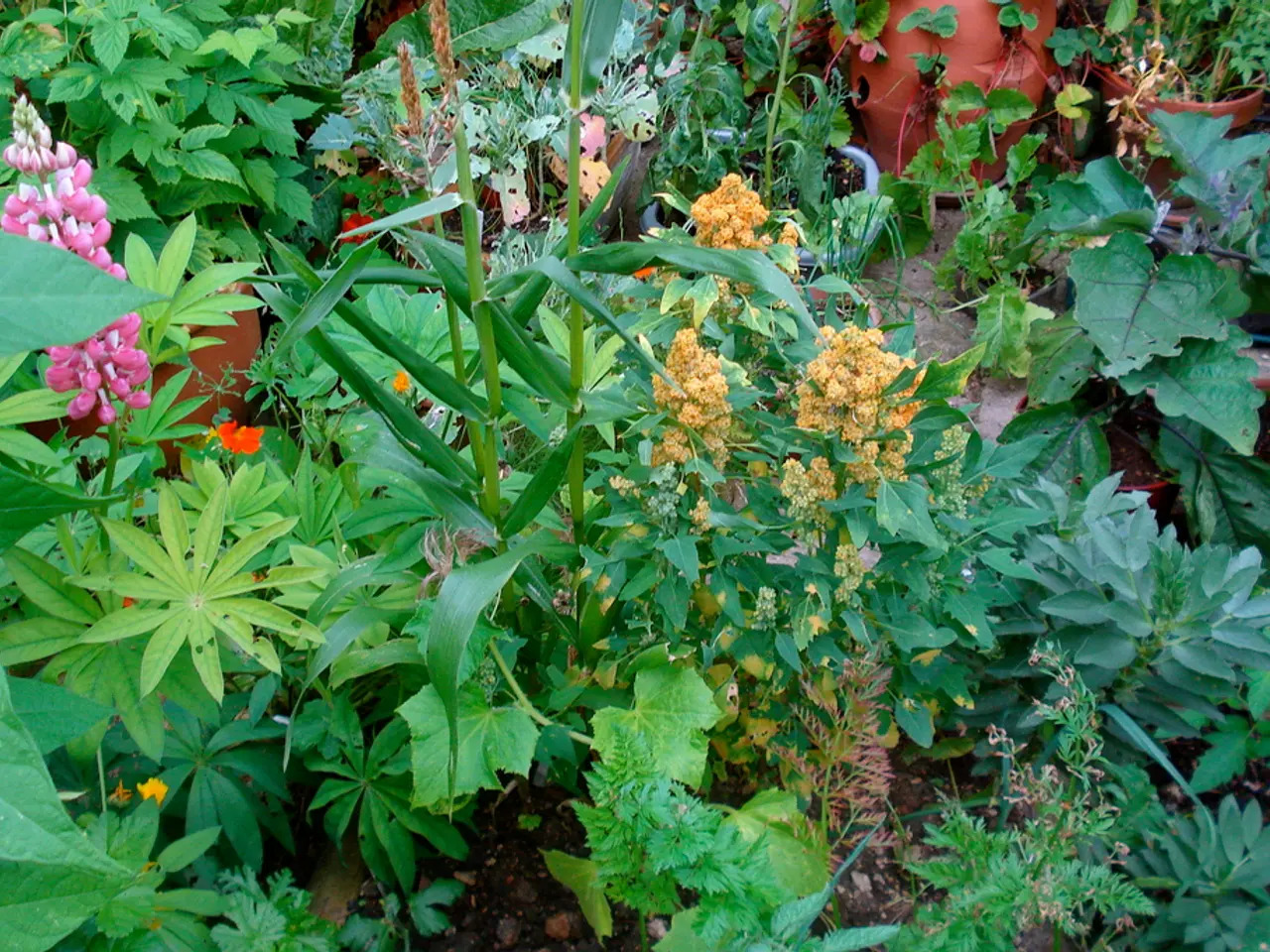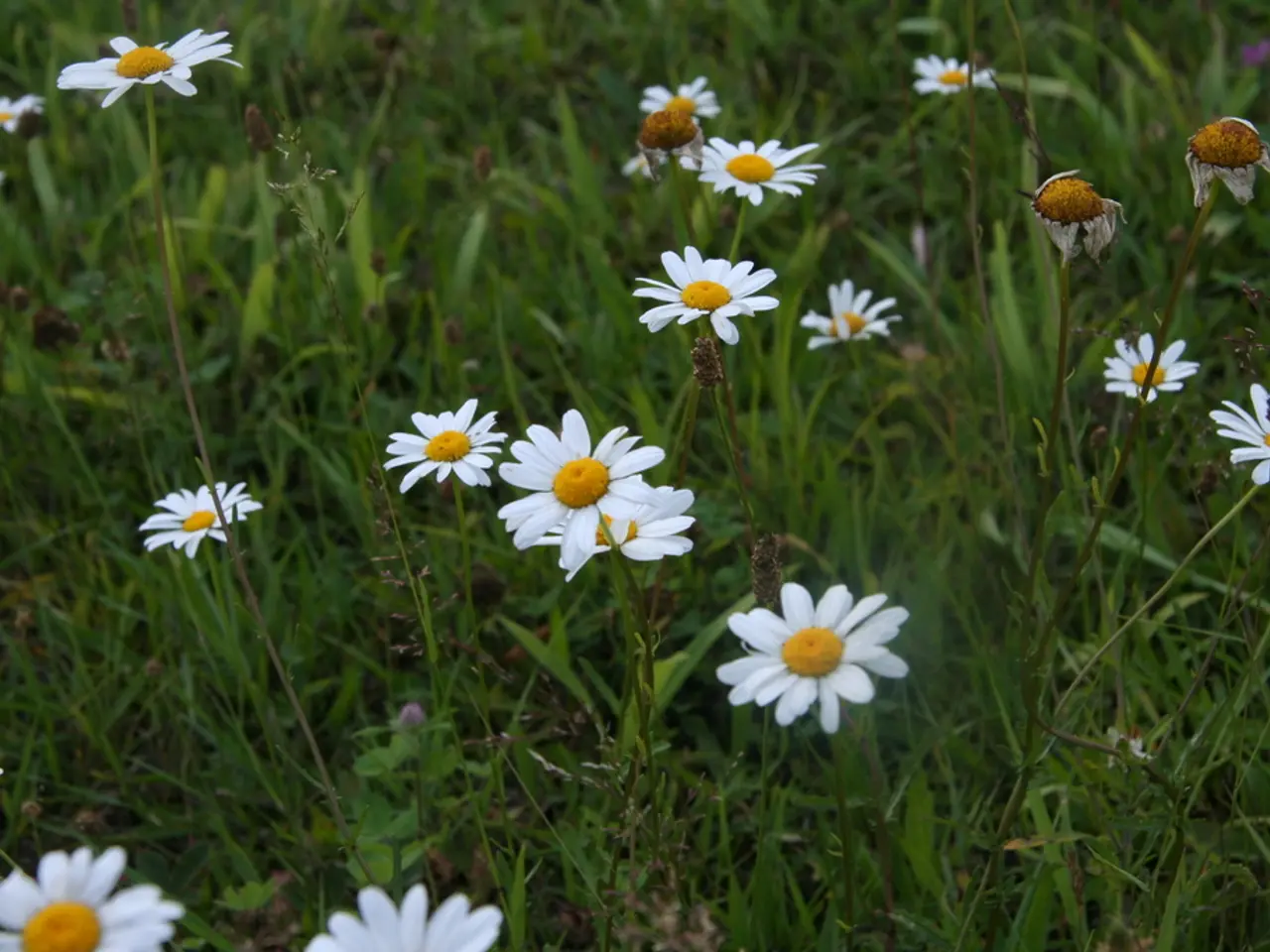Managing Bacterial Blight in Philodendrons: Strategies for Effective Control
Bacterial blight, a common disease affecting philodendrons, can be a concern for any plant enthusiast. This bacterial disease, which causes water-soaked, dark lesions on leaves and stems, can lead to rapid wilting, yellowing, and tissue death if left untreated.
To identify bacterial blight, keep an eye out for symptoms such as water-soaked spots or lesions that turn dark or black, yellowed, wilted leaves, and infected tissue that turns brown or black and shrivels. The disease tends to progress rapidly in warm, moist conditions, and sometimes bacterial ooze may be visible as droplets on affected areas during humid conditions.
Fortunately, there are ways to treat and manage bacterial blight. Sanitation and removal of infected parts play a crucial role. This includes removing and disposing of infected leaves, stems, or branches to limit the spread of the disease. Pruning should be done during dry weather and disinfecting pruning tools between cuts is essential to prevent the spread of disease.
Environmental control is another important aspect. Avoid overwatering and ensure good air circulation to reduce humidity around the plant. Overhead watering should be avoided as it can spread bacteria.
Chemical control can also be employed, with copper-based bactericides being a useful tool for managing bacterial blight and leaf spot. However, the use of antibiotics like streptomycin, while practiced in agriculture, is risky due to resistance development and is generally not recommended for houseplants.
Cultural practices such as maintaining healthy plants through proper fertilization and avoiding injury that could allow bacterial entry, using disease-free planting material, and growing resistant varieties if available, can also help in managing bacterial blight.
Early detection and prevention are key to managing bacterial blight in philodendrons. If the infection is severe and systemic, it may be necessary to discard the plant to prevent spreading.
In addition to managing bacterial blight, it's important to remember that philodendrons prefer warmer temperatures between 65°F and 78°F (18°C and 25°C) and thrive in indirect sunlight. Fungi can lead to fungal infections and root rot, so it's crucial to avoid overwatering philodendrons and provide them with well-draining soil. A mix of peat, perlite, and pine bark provides the balanced nutrition and moisture retention needed for philodendrons. Good air circulation and a humidity level around 60% mimicking the philodendron's native tropical environment are also important for their health.
Horticultural oils like neem oil can be used as a natural pesticide to manage pests in philodendrons. Only water philodendrons when the top inch of soil is dry to prevent overwatering and potential root rot. A healthy philodendron is less susceptible to diseases and pests.
Larry Meyers, with over 10 years of lawn and landscaping experience, aims to share his gardening knowledge and create a one-stop shop for all gardening information. Regularly cleaning tools and ensuring they are clean before pruning can help prevent the spread of pathogens in philodendrons. Pruning dead or damaged leaves encourages new growth in philodendrons. During the growing season (spring and summer), a light dose of fertilizer monthly is beneficial for philodendrons.
[1] Source: Horticulture.com, The Spruce, Gardening Know How, and Philodendron.org.
To maintaining a healthy philodendron lifestyle, remember that regular cleaning of tools and pruning dead or damaged leaves can prevent the spread of pathogens. Additionally, focusing on home-and-garden care, such as providing good air circulation, well-draining soil, and a balanced mix of peat, perlite, and pine bark, will help keep your philodendron thriving and less susceptible to bacterial blight and other diseases. Gardening techniques, like timing fertilization during the growing season (spring and summer), use of natural pesticides like neem oil, and pruning during dry weather, are all essential practices to employ for a successful home-and-garden experience with philodendrons.




